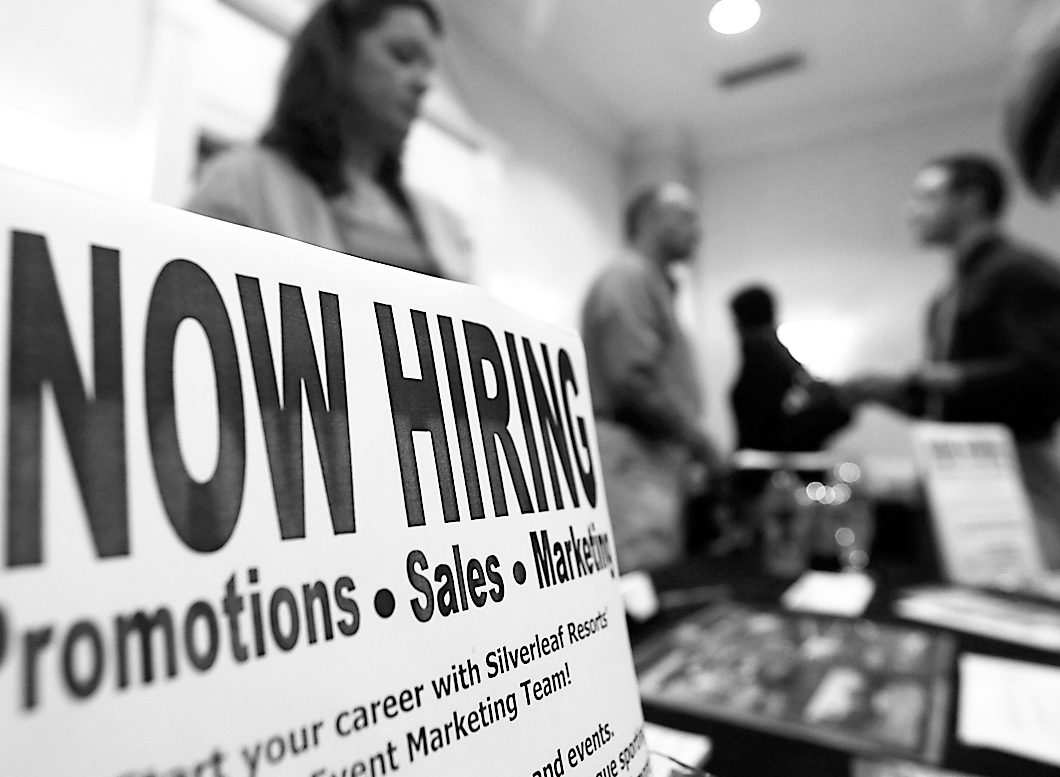The Labor Department's employment report Friday showed 146,000 jobs were created in November, or about 50 percent more jobs than analysts expected. In addition, the jobless rate fell to 7.7 percent, the lowest level in four years. This is particularly welcome news because it shows that consumer and employer confidence have continued to rise, even in the face of economic uncertainty aggravated by fear of a failure in Washington to avert pending end-of-year automatic tax increases and spending cuts.
Still, the rate of job growth is nowhere near the level the nation needs to rejuvenate strong economic growth and bring millions of unemployed back on payrolls and end their static suffering.
Perhaps the most important lesson to be taken from the jobs report is that the nation's recovery, though steady, remains slow enough to be vulnerable to the outcome of negotiations in Washington to avert the so-called "fiscal cliff."
It should put further pressure on the recalcitrant Republican leadership not to sabotage the economy by insisting on renewing the Bush-era tax cuts for the wealthiest 2 percent as their extortionist price for keeping the tax cuts intact for the other 98 percent of American earners.
If Republicans take the sabotage route, economists estimate it will cost the nation 1.2 million jobs and a slowdown of at least 1 percent of the current modest rate of around 2 percent. The same can be said if they decide to let tax cuts for the middle class stand but try to hold the economy hostage to new high-end tax cuts when another decision on raising the nation's debt ceiling decision surfaces in late January or early February.
In fact, the nation's jobless problem should remain Washington's first priority. A closer look at the latest report emphasizes the issue of joblessness. The jobless report is mainly a snapshot of the number of people looking for work who can't find a job. When analysts factor in the number of people who have dropped out of the workforce in frustration because they can't find a job, or who are underemployed in part-time or more menial work than the kind of jobs they seek, the broader measure of unemployment is still above 14 percent. It fell marginally in November from 14.6 percent to 14.4 percent.
A measure of the number of adults either employed or seeking work -- the labor participation rate -- also remains discouraging: It was 63.6 percent in November, just a tenth of a point higher than at the low point, in August, of the current recovery.
Other aspects of unemployment further reflect the need for Republicans to reach for a truly bipartisan compromise to short-circuit the spending cuts and tax increases that they demanded in 2011 for the last increase in the nation's debt ceiling. At the current rate of job growth, a steady but slow 157,000 new jobs a month, it will take years to work down the jobless rate to 5 or 6 percent.
In the meantime, workers and families in need of jobs -- and particularly young people and minorities -- will continue to suffer from high levels of unemployment, and the nation will fail to receive the benefit of their constructive participation in the workplace, and their addition to consumer spending.
In these circumstances, it would be far sounder policy for Republicans to allow new stimulus programs that can be shown to be effective. Job training and public sector investments in infrastructure and new-generation industries remain essential. All that begs a forward-looking Republican partnership with the Obama administration.

